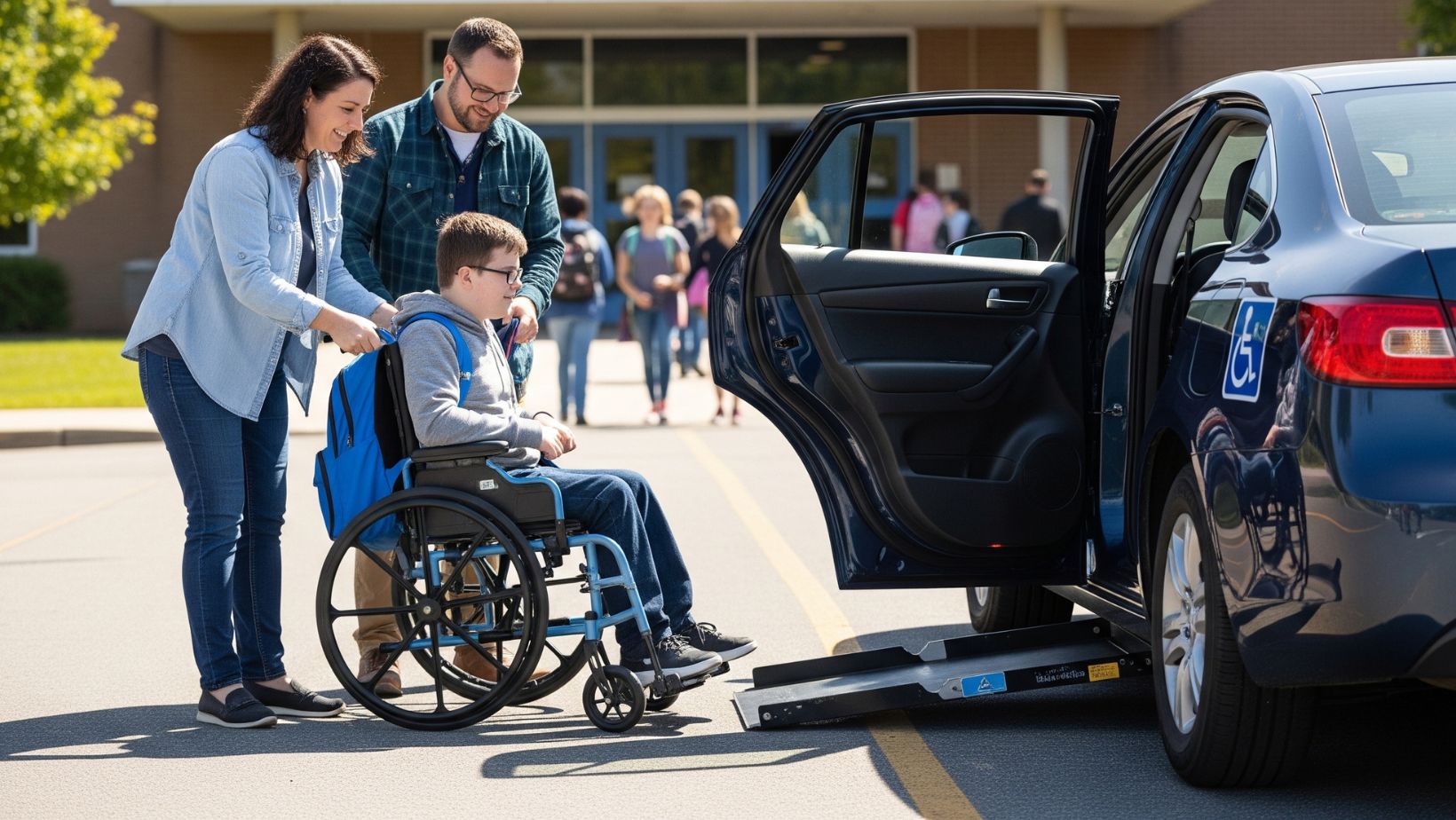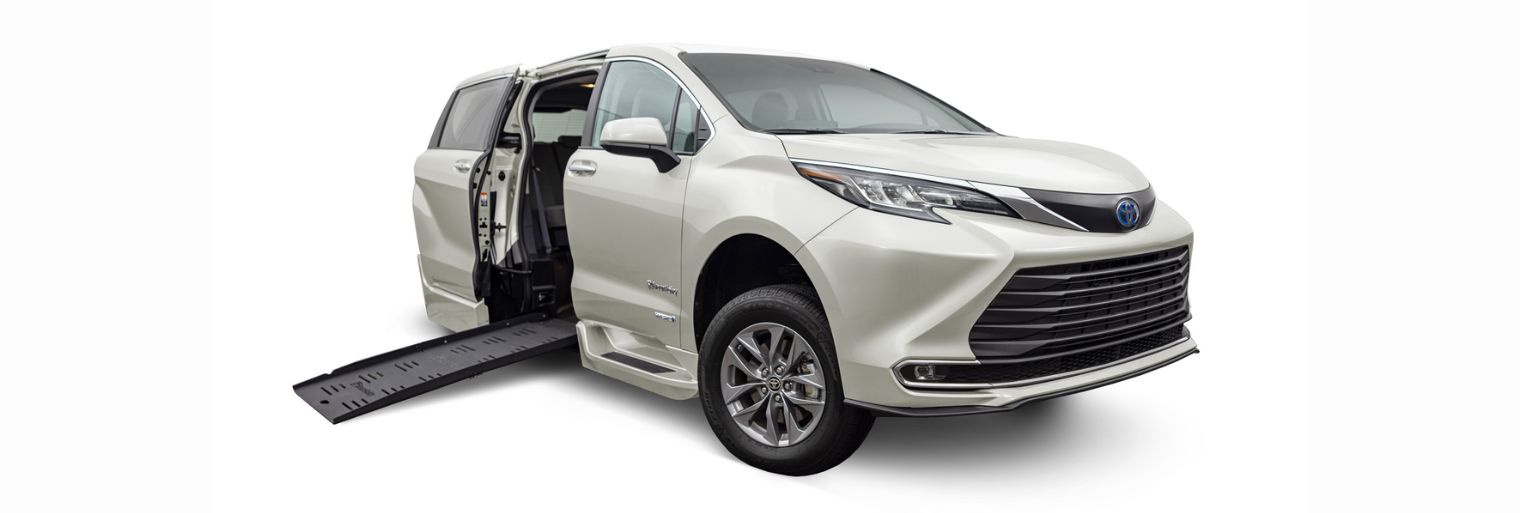
Back-to-school season can be overwhelming for many parents. You have to buy supplies, adjust to new schedules, fill out endless forms, and prepare for parent-teacher meetings. But if your child has a disability, you also need to think about travel logistics.
It’s not just about getting from point A to B. It might mean finding the right wheelchair-accessible vehicle, coordinating with your school district for a properly equipped school bus, or making sure the ride includes support like a trained aide. When the little details slip through the cracks, they can add to the overall stress.
To help you out, we’ll provide actionable insights into key areas, including how to integrate transportation into your child’s Individualized Education Program (IEP), essential tips for choosing and outfitting a personal vehicle, and different strategies to streamline those hectic school mornings.
Coordinating School Transportation With Your District
For most parents, school transportation is a fairly straightforward affair. You find the designated bus stop, ensure your child is ready on time, and wave goodbye as the school bus pulls away.
However, if your child lives with a disability such as mobility impairments, vision problems, autism spectrum disorder (ASD), ADHD, or other complex medical needs, you can take advantage of the transportation services included in their Individualized Education Program (IEP).
Understand Your Child’s IEP and Transportation Rights
Developed collaboratively by parents, educators, and relevant specialists, an IEP is a legally binding document developed for students who receive special education services under the Individuals with Disabilities Education Act (IDEA).
This program outlines your child’s learning goals and the required support to succeed in school. Most parents think of it in terms of classroom help, like speech therapy or extra time on tests, but it also covers how your child gets to and from school.
Under federal law (IDEA), transportation is specifically listed as a “related service.”
This means that if your child requires transportation to access and benefit from the special education and related services outlined in their IEP, then the school district must provide it. That could include:
- A wheelchair-accessible bus or van
- Door-to-door pickup and drop-off
- A trained aide or nurse to assist during a medical emergency
- Consistent route and seating arrangement
- Behavior or sensory accommodations
Advocating for Special Needs Transportation in the IEP Meeting
If transportation isn’t already part of your child’s IEP, you have every right to speak up. You can request an IEP meeting to talk about transportation at any time. Before meeting:
- List any challenges your child is facing with current transportation (meltdowns, delays, safety concerns, etc.)
- Document specific incidents (missed pickups, anxiety before rides, unsafe situations)
- Gather medical or therapy notes if relevant
Once you’re in the meeting, clearly articulate your child’s needs and advocate for specific accommodations. Discuss the type of vehicle, request specialized equipment, ask for trained personnel, and discuss the duration of the ride and the directness of the route.
Work With School Staff for a Smooth Transition
Once the transportation plan is in place, we highly recommend arranging a “trial run” with the school district’s transportation team before the school year officially begins. This way, your child will meet the driver and any aides, see the bus up close, practice getting on and off, and experience the securement process in a calm, low-pressure environment. This simple method will also give you the perfect opportunity to ask any last-minute questions without the typical school morning rush.
Choosing the Right Accessible Vehicle for Your Family
While school bus services can work well for some families, many parents prefer to drive their child to school themselves for extra peace of mind. If you’re one of them, consider exploring options from reputable providers like Clock Mobility. With their diverse inventory of new and pre-owned accessible vehicles, you have the option to find a solution that perfectly fits your family’s unique lifestyle and your child’s specific accessibility requirements.

Should You Get An Accessible SUV or Minivan?
When it comes to accessible vehicles, you have the option to choose between minivans and SUVs.
- Minivan: For decades, minivans such as Chrysler Pacifica or Toyota Sienna have been the gold standard for accessible vehicle conversions. Minivans typically feature lower floors, which means easier ramp angles, ample headroom, and superior interior space. The iconic power sliding doors are a huge benefit in tight parking spots like busy school drop-off zones or parking lots.
- SUVs: Many people prefer accessible SUV conversions for a more rugged look and a higher driving position. Many SUVs offer AWD or 4WD, which can be a significant advantage if you live in areas with challenging weather conditions (snow, ice, heavy rain). They also offer more legroom and cargo space. On the downside, SUVs typically sit higher off the ground, which can mean steeper ramp angles unless you install a kneeling system.
What Else to Look for in a Converted Vehicle
Once you have the right vehicle, it’s time to look for other features and adaptive equipment. This includes:
Ramps vs. Lifts
- Ramps (fold-out or in-floor) are lightweight, lower-maintenance, and often quicker to use. However, manual ramps require physical effort from a caregiver.
- Lifts are more suitable for heavier power chairs or when a ramp’s angle is too steep. On the downside, they may require power from the vehicle and can take up interior space when stowed. Some models might even expose the wheelchair to exterior elements if mounted externally without a cover.
Headroom and Interior Space
Always test for entry height and interior clearance. Your child should be able to enter comfortably without tilting their head or adjusting their posture. Also, make sure there’s enough room for extra equipment, like a backpack or medical gear. If possible, opt for foldable or removable seats.
Wheelchair Securement Systems
Proper securement is non-negotiable. Your vehicle should include four-point tie-down systems to stabilize the wheelchair and prevent movement during travel, sudden stops, or accidents, significantly reducing the risk of injury. You should also invest in a lap and shoulder belt system that works in conjunction with the wheelchair securement for maximum safety.
Financial Resources for Accessible Vehicle Modifications
Wheelchair-accessible vehicles can get expensive, with most models costing anywhere from $30,000 to $90,000+. Luckily, several funding options can help offset these costs, including the Michigan Assistive Technology Program, State Vocational Rehabilitation (VR) Programs, and non-profit organizations like The Special Kids Fund or the National Multiple Sclerosis Society (MS).
Additionally, brands like Toyota, Chrysler, Honda, and others often offer mobility rebates (anywhere from $1,000 to $2,500) if you modify a new vehicle within a certain time frame. Ask your dealer or mobility specialist to guide you through these offers.
Like What you're reading? Subscribe to our Newsletter and get new updates directly to your inbox
Planning a Safe, Efficient School Commute
School mornings are hectic for every family, but when your child uses a wheelchair or has other accessibility needs, a little extra planning goes a long way.
Build a Consistent, Accessible Morning Routine
A predictable morning routine reduces stress for you and your child. Try these parent-tested tricks:
- Prep the night before: Lay out school supplies, pack bags, set out any medical equipment, and double-check medications.
- Use visual schedules or timers: If your kid has autism, ADHD, or anxiety, make a picture-based checklist or countdown timer for easier transitions. Break the morning routine into small, manageable steps (e.g., “Wake Up,” “Potty,” “Get Dressed,” “Eat Breakfast,” “Brush Teeth,” “Pack Bag,” “Shoes On,” “Go to Bus/Car”).
- Plan extra time for loading and securing: Rushing creates stress and safety risks. Try leaving an extra 10–15 minutes for loading/unloading, especially if you’re managing a ramp or lift.
Optimize Your Travel Route
While it’s easy to pick the “fastest route”, think about what’s best for your child.
- Use navigation apps (like Google Maps or Waze) to avoid traffic and delays. Explore different options during off-peak hours to identify routes with fewer traffic lights, less congestion, or smoother road conditions.
- Check out accessible drop-off zones: Some schools have designated areas for accessible vans or buses, so always ask for accommodations.
- Plan around sensory triggers or motion sickness: A shorter or smoother route might be worth a few extra minutes if it helps your child feel calmer.
- Identify safe pull-over spots: Know where you can safely pull over in case of a breakdown, a medical emergency, or if your child needs a quick break.
What to Do if Your Vehicle Breaks Down
Even with the most meticulously planned routes and routines, things can go south. In that case, keep the following tips in mind:
- Safely pull your vehicle off to the side of the road or into a parking lot, away from moving traffic. Turn on your hazard lights to alert other drivers.
- If your child is in immediate medical distress, the weather is extreme, or you feel unsafe, don’t hesitate to call 911. Also, contact roadside assistance to help you out.
- Don’t forget to create a “Go Bag” for the vehicle. Beyond standard supplies, include any specific items your child might need (e.g., anti-seizure medication, EpiPen, glucose tablets, extra catheters, spare G-tube supplies). Bring non-perishable items or water to keep spirits (and blood sugar) up.
- Set up a backup transportation plan with your school or a trusted contact in case of a breakdown or delay.
Secure Your Ride with Clock Mobility
If you want to make school runs easier, contact Clock Mobility. We have a huge selection of new and pre-owned accessible vans from trusted names like Chrysler, Honda, and Dodge, all converted by top brands like BraunAbility and VMI. We offer short-term or long-term rentals, so you can book a ride for school events, manage school transportation temporarily, or simply use it while yours is being serviced.
With our Try Before You Buy offer, you can experience the functionality of an accessible vehicle firsthand before making a commitment. Our certified technicians specialize in accessible vehicles and can handle everything from routine tune-ups to complex adaptive equipment installations and general automotive repairs. Call us at (866) 380-3326 to schedule a consultation or visit one of our showrooms in Michigan to explore your options.
